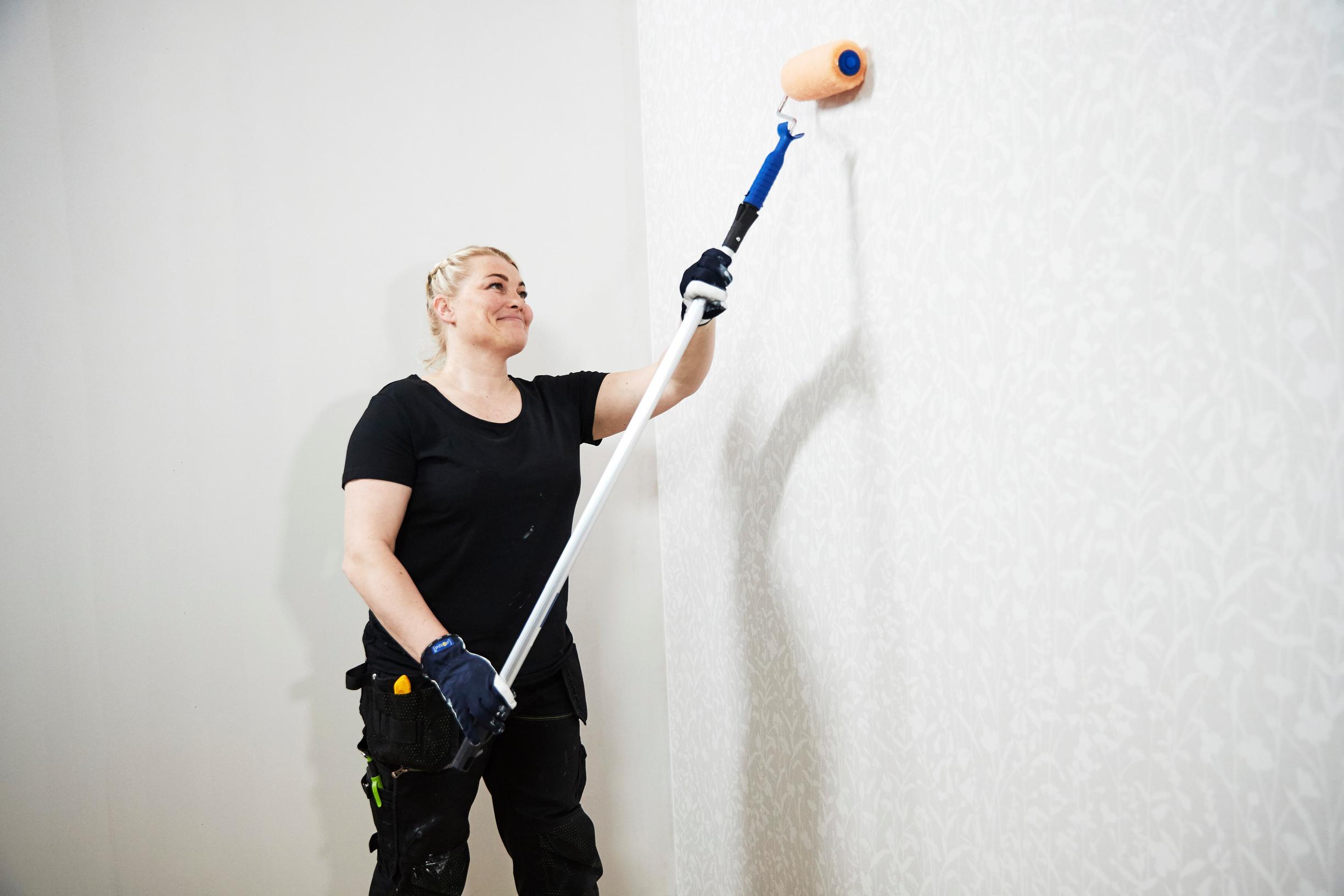
Expert instructions for proper wallpaper preparation—here’s how you’ll succeed
Careful preparation ensures successful wallpapering. A smooth, well-prepared surface—filled and even painted—ensures your walls look their best.
Proper wallpaper preparation is essential because any unevenness in the wall will show through the wallpaper. Standard wallpaper won’t conceal holes or bumps.

Using lining paper
Lining paper is an effective way to quickly and easily create a smooth surface for wallpapering. Thick lining paper can cover minor wall imperfections, such as old fiberglass wallpaper or the surface of a plastered wall. However, for the best results, fill any holes and dents, and prime old filler and other porous surfaces before applying the lining paper.
When working with accent wallpaper, begin by painting the entire wall in a matching color. Leave the wallpaper edges a few centimeters short at the corners; this ensures that minor imperfections in the corners won’t impact the overall look.
Be sure to let the lining paper dry overnight before starting the actual wallpapering.
Removing old wallpaper
- It is recommended to remove old wallpaper when possible. You’ll find ready-made products in stores that can make the job much easier.
- Use a roller to apply the product over the old wallpaper, then let it do its job.
- This method often allows you to remove the wallpaper one strip at a time.
- If needed, repeat the process. Occasionally, only the surface layer will peel off, leaving the backing on the wall.

Preparation based on wall material
Painted surfaces
- On painted surfaces, simply filling and lightly sanding any screw holes or dents is often sufficient before wallpapering.
Drywall surfaces
- If the walls have new drywall surfaces, always tape, fill, and paint them before wallpapering. This will allow you to remove the wallpaper later without damaging the drywall’s paper surface.
Masonry walls
- Before wallpapering, masonry walls should be skimmed and painted.
When wallpapering the walls of an old house, it’s important to ensure that the wall surface is as even and uniform in color as possible. Small bumps, in particular, can show surprisingly clearly through paper wallpaper, as can uneven or dark areas. You can install new wallpaper over old paper wallpaper, but it’s advisable to sand the seams of the underlying wallpaper smooth. A good alternative is to prep the wall with lining paper.
Heavily plastic-coated or embossed wallpapers need to be removed before wallpapering, as paper wallpaper won’t adhere to these surfaces. Wood fiberboard is porous and may absorb the adhesive, preventing the wallpaper from sticking properly. To address this, pre-paste wood fiberboard surfaces. To prevent the wallpaper from tearing at panel seams, paste paper tape under the wallpaper at the seams. You can also wallpaper the wood fiberboard with lining paper before installing the actual wallpaper. Lining paper is especially recommended when the wallpaper is light-colored.
Expert: CEO Piia Kuurma, Domus Classica Oy



